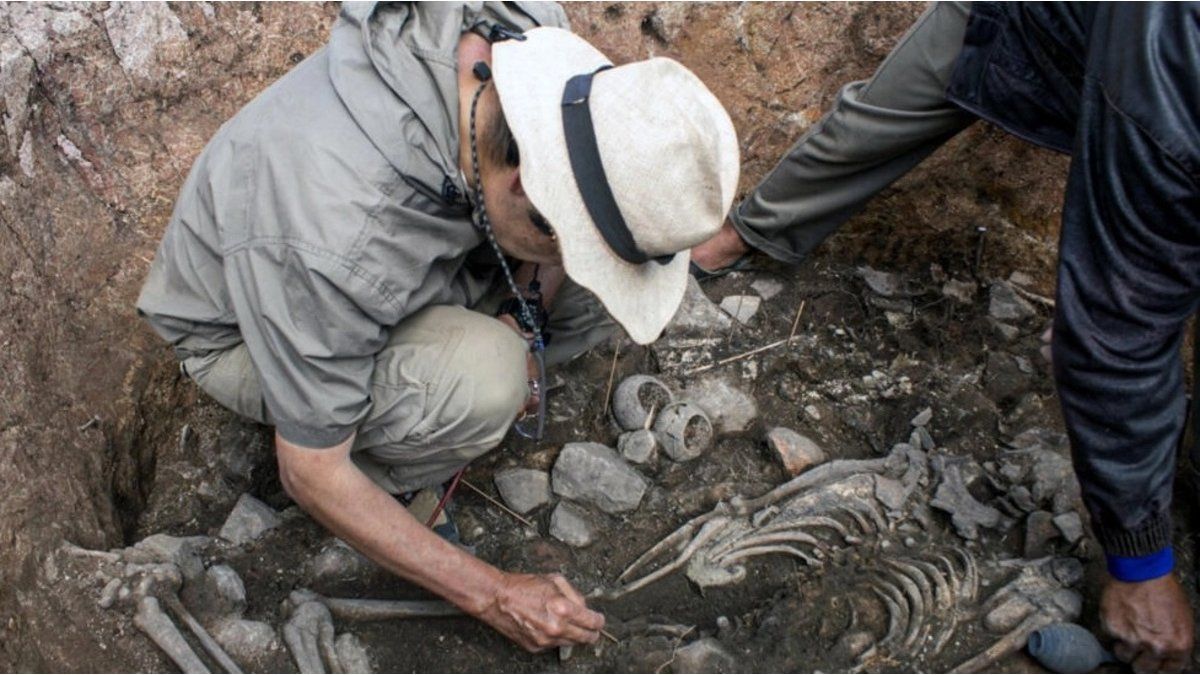A 3,000-year-old tomb of a priest was discovered by a group of japanese archaeologists and Peruvians next to ceramic offerings at a ceremonial site of the northern Peru.
“We have recently discovered the tomb of a 3,000-year-old character at the Pacopampa archaeological site,” in the region Cajamarca (900 kilometers north of Lima)explained the archaeologist Juan Pablo Villanueva.
The researcher pointed out that “the funerary context is intact. He is one of the first priests of the Andes that has a series of offerings”.
The body, placed in an extended position with the semiflexed lower extremitiesIt is oriented from south to north.
Towards the west side of the tomb were deposited small spherical ceramic bowls, a carved bone spatula, and other offerings.
were also found two stampsone with designs of an anthropomorphic face and another with the face of a jaguar, the AFP agency reported.
how was the body
The body and the offerings were covered by at least six layers of ash and earth, as a filler for the tomb, a circular hole three meters in diameter and one meter deep.
“The finding is super important because he is one of the first priests to begin to control the temples in the Andes in the north of the country,” declared the Japanese archaeologist Yuji Sekiwho has been working at that site for 18 years.
The researchers estimate that the priest lived around 1,000 BC
“We have to correct our idea” because already then “powerful leaders appeared in the Andes”Seki assured.
cure peru 2.jpg
In September 2022, the same group of archaeologists discovered the tomb of the “Priest of the Whores”more than 3,000 years old, along with musical instruments made from seashells.
The pututos or pututus They are shells that the inhabitants of the old Peru they sounded like trumpets.
pacopampalocated at an altitude of 2,500 meters, has an extension of 1.5 kilometers and is made up of nine buildings made of carved and polished stone, together with stairs.
In the same archaeological site other burials were found, such as that of the “Lady of Pacopampa” in 2009 and those of both “priests of the Jaguar Serpent” in 2015, estimated to date from about 700 to 600 BC
In investigations in pacopampa archaeologists from the Museum of Ethnology of Japan and the National University of San Marcos of Peru.
Source: Ambito




